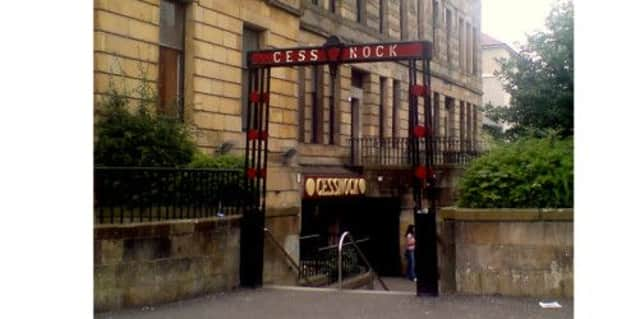Online campaign to save Cessnock underground arches


Strathclyde Passenger Transport (SPT) last week removed one of the arches at Cessnock subway station as part of a £290m modernisation project being carried out on all 15 stations on the Glasgow underground network.
A Twitter campaign began shortly after under the hashtag #savecessnocksign urging those with a soft spot for the arches to contact SPT and express their displeasure.
Advertisement
Hide AdAdvertisement
Hide AdPassing motorists were also encouraged to sound their horn in support when passing the station.
The Cessnock signs, installed in 1989, are a nod to the area’s architectural heritage and are styled in the mode of Alexander ‘Greek’ Thompson.
Architect of the arches, Lachie Munro of Munro Associates, said he was pleased that they were still appreciated by the Glasgow public.
“I’m both flattered and suprised,” he said.
“They are only around 25 years old but due to their design they do look a lot older.
“I was involved in restoring the two tenements, one of which was designed by Alexander The Greek, that surround the underground and suggested to the Scottish Development Agency that the arches would provide a good link between the two buildings and improve the area.
“I did the design based based on Alexander the Greek themes. The original discs on the arches were painted orange to match the then new colours of the underground.
“One of the arches replaced a giant U which was installed at all stations at the time of the 1970s upgrade.
“It’s pleasing that people still find them attractive. It’s great to hear that. I’m amazed at the reaction.”
Advertisement
Hide AdAdvertisement
Hide AdThe modernisation work prompted a strong reaction on Twitter with @Anurserytch tweeting “Contemplating chaining myself to the remaining Cessnock sign. Who will join me?”
@bryan_kelly73 said: “@GlasgowSubway you are only the custodians of the system - it belongs to the people of Glasgow, remember that and reinstate the sign”
@dr_crankenstein added: “When I lived in Kinning Park I’d walk further 2 Cessnock to get the subway to see that sign. Don’t be fools #savecessnocksign”
In response to the protest, SPT said an alternative home was being sought for the removed arch with discussions ongoing with the city’s newly-opened transport museum.
The second arch still remains in place although the transport operator say they are considering its future.
A statement from SPT said: “It has been over 30 years since the last upgrade of the Subway and we believe that the time is right to bring it into the modern age.
“The upgrade of signage at Cessnock is part of that work and will enable us to establish a consistent and contemporary external design for the subway in advance of the Commonwealth Games next year.
“SPT’s refreshed external signage was given full planning permission last year and approved on the basis that SPT is delivering improved signs with higher quality materials and better lighting which will result in clearly visible entry points for the Subway and better accessibility for customers.
Advertisement
Hide AdAdvertisement
Hide Ad“This does not mean we will forget our heritage. Many elements of the 70s design - brought in during the last modernisation of the system - will be preserved and we are endeavouring to capture as much of that as possible during the upgrade.
“Pieces of significance are being stored and we are in discussion with the Riverside Museum and others about how people might enjoy these in the future.
“The Cessnock metal arches are part of that preservation strategy. Despite the fact they may not be considered as architecturally significant (they are pastiche rather that an original Greek Thomson or Rennie Mackintosh design), we do appreciate that they have been a key part of the area since 1989 when they were installed. One arch has already been safely dismantled and we are currently considering the removal of the second.”